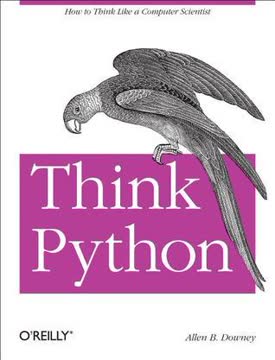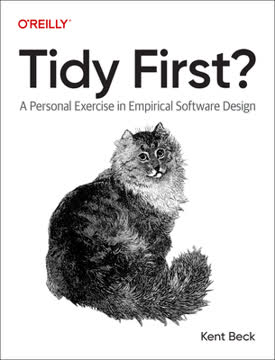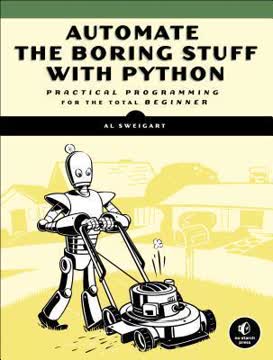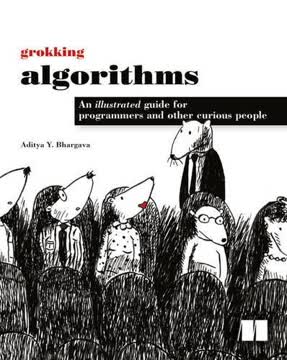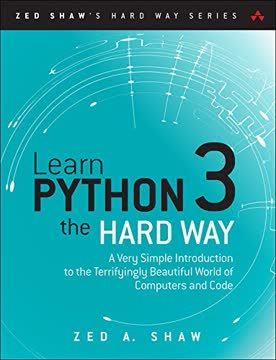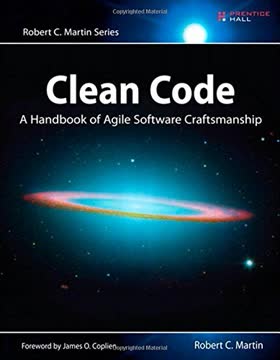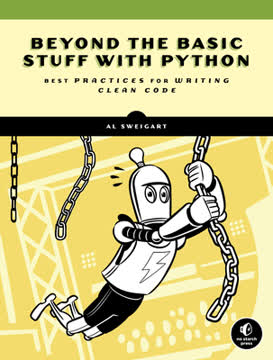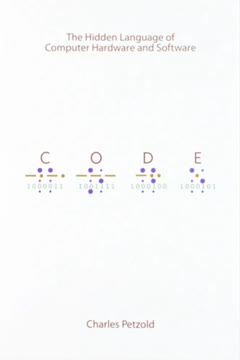重点摘要
1. Python的函数是第一类对象
函数是对象——它们可以被赋值给变量,存储在数据结构中,传递给其他函数并从其他函数返回。
函数作为数据。 在Python中,函数被视为第一类公民,这意味着它们可以像其他对象一样被操作。这种特性允许强大的编程范式:
- 将函数赋值给变量
- 将函数存储在列表、字典或其他数据结构中
- 将函数作为参数传递给其他函数
- 从其他函数返回函数
- 在函数内部定义函数(嵌套函数)
这种灵活性使得高级编程技术如高阶函数、闭包和函数式编程模式成为可能,使Python成为解决复杂问题的多功能且富有表现力的语言。
2. 装饰器增强和修改函数行为
装饰器定义了可重用的构建块,你可以将其应用于可调用对象以修改其行为,而无需永久修改该可调用对象。
语法糖用于修改。 装饰器提供了一种干净且可重用的方式来扩展或修改函数或类的行为:
- 它们包装一个函数,修改其行为而不改变其源代码
- 常见用途包括日志记录、计时、访问控制和缓存
- 装饰器可以堆叠,允许对单个函数进行多重修改
- 它们促进了关注点分离的原则,使代码保持模块化
装饰器使用@语法实现,使代码更具可读性和可维护性。它们利用Python的第一类函数和闭包提供了一种强大的元编程机制。
3. *args和**kwargs实现灵活的函数参数
*args和**kwargs让你可以编写接受可变数量参数的函数。
可变参数的灵活性。 这些特殊的语法元素允许函数接受任意数量的位置参数或关键字参数:
*args将额外的位置参数收集到一个元组中**kwargs将额外的关键字参数收集到一个字典中- 它们为函数定义提供了灵活性,允许未来的扩展
- 对于创建包装函数或具有可选参数的API非常有用
这个特性使得创建更通用的函数成为可能,并有助于编写能够适应不断变化的需求而无需修改函数签名的代码。
4. 推导式提供简洁的集合创建语法
推导式只是简单for循环模式的高级语法糖。
优雅的集合创建。 列表、集合和字典推导式提供了一种基于现有可迭代对象创建集合的紧凑方式:
- 它们将集合的创建和填充结合在一行中
- 通常比等效的for循环更具可读性和速度
- 可以包含条件以过滤元素
- 可用于列表、集合和字典
示例:
- 列表推导式:
[x*2 for x in range(10) if x % 2 == 0] - 集合推导式:
{word.lower() for word in words} - 字典推导式:
{k: v**2 for k, v in my_dict.items()}
虽然强大,但重要的是在简洁性和可读性之间取得平衡,避免过于复杂的推导式可能会掩盖代码的意图。
5. 生成器函数和表达式简化迭代器创建
生成器抽象了编写基于类的迭代器所需的大量样板代码。
轻松迭代。 生成器提供了一种无需完整类实现即可创建迭代器的简单方法:
- 使用
yield关键字生成一系列值 - 内存高效,因为它们按需生成值
- 可以在for循环、列表推导式和其他可迭代上下文中使用
- 生成器表达式为简单生成器提供了简洁的语法
生成器函数:
python
def countdown(n):
while n > 0:
yield n
n -= 1
生成器表达式:
python
squares = (x*x for x in range(10))
生成器在处理大型数据集或无限序列时特别有用,因为它们不会一次性将所有值存储在内存中。
6. 字典是多功能且强大的数据结构
字典是Python中的核心数据结构。
高效的键值存储。 字典提供快速、灵活且功能丰富的关联数组:
- 键查找、插入和删除的平均时间复杂度为O(1)
- 支持任何可哈希对象作为键(字符串、数字、元组)
- 提供如
get()方法以安全地访问键并提供默认值 - 可以用来模拟其他语言中的switch/case语句
高级字典特性:
- OrderedDict: 记住插入键的顺序
- defaultdict: 为缺失的键提供默认值
- ChainMap: 将多个字典作为单个映射进行搜索
字典是Python实现的基础,并在语言本身以及许多Python库和框架中广泛使用。
7. 有效的循环技术提高代码可读性
在Python中编写C风格的循环被认为是不Pythonic的。
Pythonic迭代。 Python提供了几种惯用的方式来遍历序列和执行迭代:
- 使用
for item in iterable而不是索引 - 当需要索引和值时使用
enumerate() - 利用
zip()同时遍历多个序列 - 利用
itertools模块进行复杂迭代
示例:
python
代替:
for i in range(len(items)):
print(i, items[i])
使用:
for i, item in enumerate(items):
print(i, item)
遍历两个列表:
for name, age in zip(names, ages):
print(f"{name} is {age} years old")
这些技术使代码更简洁、可读且高效,符合Python追求清晰和简洁的哲学。
8. 面向对象编程概念优化代码组织
抽象基类(ABCs)确保派生类实现基类中的特定方法。
结构化代码设计。 Python的面向对象特性为组织和结构化代码提供了强大的工具:
- 类封装数据和行为
- 继承允许代码重用和专门化
- 抽象基类定义接口并强制实现
- 属性提供对属性的受控访问
- 特殊方法(双下划线方法)允许自定义对象行为
Python中的关键OOP概念:
- 通过鸭子类型实现多态性
- 多重继承和方法解析顺序(MRO)
- 组合作为继承的替代方案
- 元类用于高级类创建控制
有效使用OOP原则可以使代码结构更具可维护性、可扩展性和模块化。
9. Python中的数据结构提供多样化的功能
如果你不需要并行处理支持,collections.deque提供的实现是实现FIFO队列数据结构的绝佳默认选择。
定制的数据组织。 Python提供了一组丰富的内置和标准库数据结构以满足各种需求:
- 列表:用于通用序列的动态数组
- 元组:用于固定集合的不可变序列
- 集合:唯一元素的无序集合
- 双端队列:用于高效插入/删除的双端队列
- Heapq:优先队列实现
- Counter:用于计数可哈希对象的多重集
选择合适的数据结构可以显著影响代码的性能和清晰度。考虑因素包括:
- 所需操作(例如,频繁插入、删除、查找)
- 内存使用
- 线程安全要求
- 是否需要排序或排序
了解不同数据结构的特性和权衡可以实现更高效和优雅的编程问题解决方案。
10. 高效的字符串格式化增强代码清晰度
如果你的格式字符串是用户提供的,请使用模板字符串以避免安全问题。否则,如果你使用的是Python 3.6+,请使用字面字符串插值;如果不是,请使用“新样式”字符串格式化。
清晰且安全的字符串构建。 Python提供了多种字符串格式化方法,每种方法都有其优点:
- %-格式化:旧样式,仍然广泛使用
- str.format():更具可读性和灵活性
- f-字符串:简洁且强大,适用于Python 3.6+
- 模板字符串:对用户提供的格式更安全
f-字符串示例:
python
name = "Alice"
age = 30
print(f"{name} is {age} years old")
用户输入的模板字符串:
python
from string import Template
user_input = Template("Hello, $name!")
print(user_input.substitute(name="Bob"))
选择适当的字符串格式化方法可以提高代码的可读性、可维护性和安全性,特别是在处理用户提供的数据或复杂的字符串构建时。
最后更新日期:
FAQ
What's "Python Tricks: A Buffet of Awesome Python Features" about?
- Overview: "Python Tricks" by Dan Bader is a guide to mastering Python by exploring its advanced features and idiomatic practices. It aims to elevate a Python developer's skills from intermediate to advanced.
- Content Structure: The book is structured into chapters that cover various Python features, including cleaner code patterns, effective functions, object-oriented programming, and data structures.
- Practical Examples: Each chapter includes practical examples and code snippets to illustrate the concepts, making it easier for readers to understand and apply them.
- Community Insights: The book also shares insights from the Python community, including feedback from experienced developers, to provide a well-rounded perspective on Python programming.
Why should I read "Python Tricks: A Buffet of Awesome Python Features"?
- Skill Enhancement: The book is designed to help Python developers become more effective, knowledgeable, and practical in their coding practices.
- Advanced Techniques: It introduces advanced Python features and idioms that can significantly improve code quality and efficiency.
- Real-World Application: The examples and tricks are applicable to real-world scenarios, making it a valuable resource for professional development.
- Community Engagement: Reading the book can also connect you with the broader Python community, as it includes insights and feedback from other developers.
What are the key takeaways of "Python Tricks: A Buffet of Awesome Python Features"?
- Cleaner Code Patterns: Learn how to write cleaner and more maintainable Python code using patterns like context managers and assertions.
- Effective Functions: Understand the power of first-class functions, decorators, and argument unpacking to create more flexible and reusable code.
- Object-Oriented Programming: Gain insights into Python's OOP features, including class and instance variables, abstract base classes, and namedtuples.
- Data Structures and Iteration: Explore Python's built-in data structures and learn how to use iterators, generators, and comprehensions effectively.
How does Dan Bader define a "Python Trick"?
- Teaching Tool: A Python Trick is a short code snippet meant to teach an aspect of Python with a simple illustration.
- Motivational Example: It serves as a motivating example, enabling readers to dig deeper and develop an intuitive understanding of Python.
- Community Origin: The concept started as a series of code screenshots shared on Twitter, which received positive feedback and led to the creation of the book.
- Accessible Learning: The tricks are designed to be accessible and easy to understand, making them suitable for developers looking to enhance their Python skills.
What are some patterns for cleaner Python code mentioned in the book?
- Assertions: Use assertions to automatically detect errors in your programs, making them more reliable and easier to debug.
- Complacent Comma Placement: Adopt a code style that avoids comma placement issues in lists, dicts, or set constants.
- Context Managers: Simplify resource management patterns using the with statement and context managers.
- Underscores and Dunders: Understand the meaning of single and double underscores in variable and method names to write more idiomatic Python code.
How does "Python Tricks" explain the use of decorators?
- Behavior Modification: Decorators allow you to extend and modify the behavior of a callable without permanently changing it.
- Reusable Building Blocks: They define reusable building blocks that can be applied to functions or classes to add functionality like logging or access control.
- Syntax and Stacking: The book explains the @ syntax for decorators and how multiple decorators can be stacked to accumulate their effects.
- Debugging Best Practices: It recommends using functools.wraps to carry over metadata from the undecorated callable to the decorated one for better debugging.
What are the differences between class, instance, and static methods in Python?
- Instance Methods: Require a class instance and can access the instance through the self parameter, allowing them to modify object state.
- Class Methods: Use the @classmethod decorator and take a cls parameter, allowing them to modify class state but not instance state.
- Static Methods: Use the @staticmethod decorator and do not take self or cls parameters, making them independent of class and instance state.
- Use Cases: The book provides examples of when to use each method type, emphasizing their role in communicating developer intent and maintaining code.
How does "Python Tricks" suggest handling dictionary default values?
- Avoid Explicit Checks: Instead of using explicit key in dict checks, use the get() method to provide a default value for missing keys.
- EAFP Principle: Follow the "easier to ask for forgiveness than permission" coding style by using try...except blocks to handle KeyError exceptions.
- Defaultdict Usage: In some cases, the collections.defaultdict class can be helpful for automatically handling missing keys with default values.
- Concise Implementation: The book provides examples of how to implement these techniques concisely and effectively.
What are some advanced string formatting techniques covered in the book?
- Old Style Formatting: Uses the %-operator for simple positional formatting, similar to printf-style functions in C.
- New Style Formatting: Introduced in Python 3, it uses the format() method for more powerful and flexible string formatting.
- Literal String Interpolation: Available in Python 3.6+, it allows embedded Python expressions inside string constants using f-strings.
- Template Strings: A simpler and less powerful mechanism for string formatting, useful for handling user-generated format strings safely.
How does "Python Tricks" explain the use of list comprehensions?
- Syntactic Sugar: List comprehensions are a concise way to create lists by iterating over a collection and applying an expression to each item.
- Template Pattern: The book provides a template pattern for transforming for-loops into list comprehensions and vice versa.
- Filtering Elements: Comprehensions can include conditions to filter elements, allowing for more complex list generation.
- Readability Considerations: While powerful, the book cautions against overusing comprehensions, especially with deep nesting, to maintain code readability.
What are some key quotes from "Python Tricks" and what do they mean?
- "Mastering Python programming isn’t just about grasping the theoretical aspects of the language." This emphasizes the importance of understanding and adopting the conventions and best practices used by the Python community.
- "A book that works like a buffet of awesome Python features (yum!) and keeps motivation levels high." This highlights the book's approach of presenting Python features in an engaging and motivating way.
- "Python’s assert statement is a debugging aid that tests a condition as an internal self-check in your program." This quote underscores the importance of using assertions for debugging and maintaining code reliability.
- "Decorators define reusable building blocks you can apply to a callable to modify its behavior without permanently modifying the callable itself." This explains the power and flexibility of decorators in enhancing code functionality.
How does "Python Tricks" address the use of virtual environments?
- Dependency Isolation: Virtual environments help isolate project dependencies, preventing version conflicts between packages and Python versions.
- Best Practice: The book recommends using virtual environments for all Python projects to keep dependencies separate and avoid headaches.
- Activation and Deactivation: It explains how to create, activate, and deactivate virtual environments to manage project-specific dependencies.
- Security Benefits: Using virtual environments reduces security risks by avoiding the need for superuser permissions when installing packages.
评论
《Python Tricks》因其简洁而深刻的中高级Python主题讲解而备受赞誉。读者们欣赏其实用的技巧、清晰的解释以及对最佳实践的关注。许多人发现这本书有助于填补知识空白并提高编码技能。书中的对话式语气和系统化结构使其既易于理解又令人愉快。尽管一些有经验的开发者觉得它的挑战性较低,但大多数人一致认为,这本书是那些希望深入掌握Python并编写更地道代码的人的绝佳资源。
Similar Books
